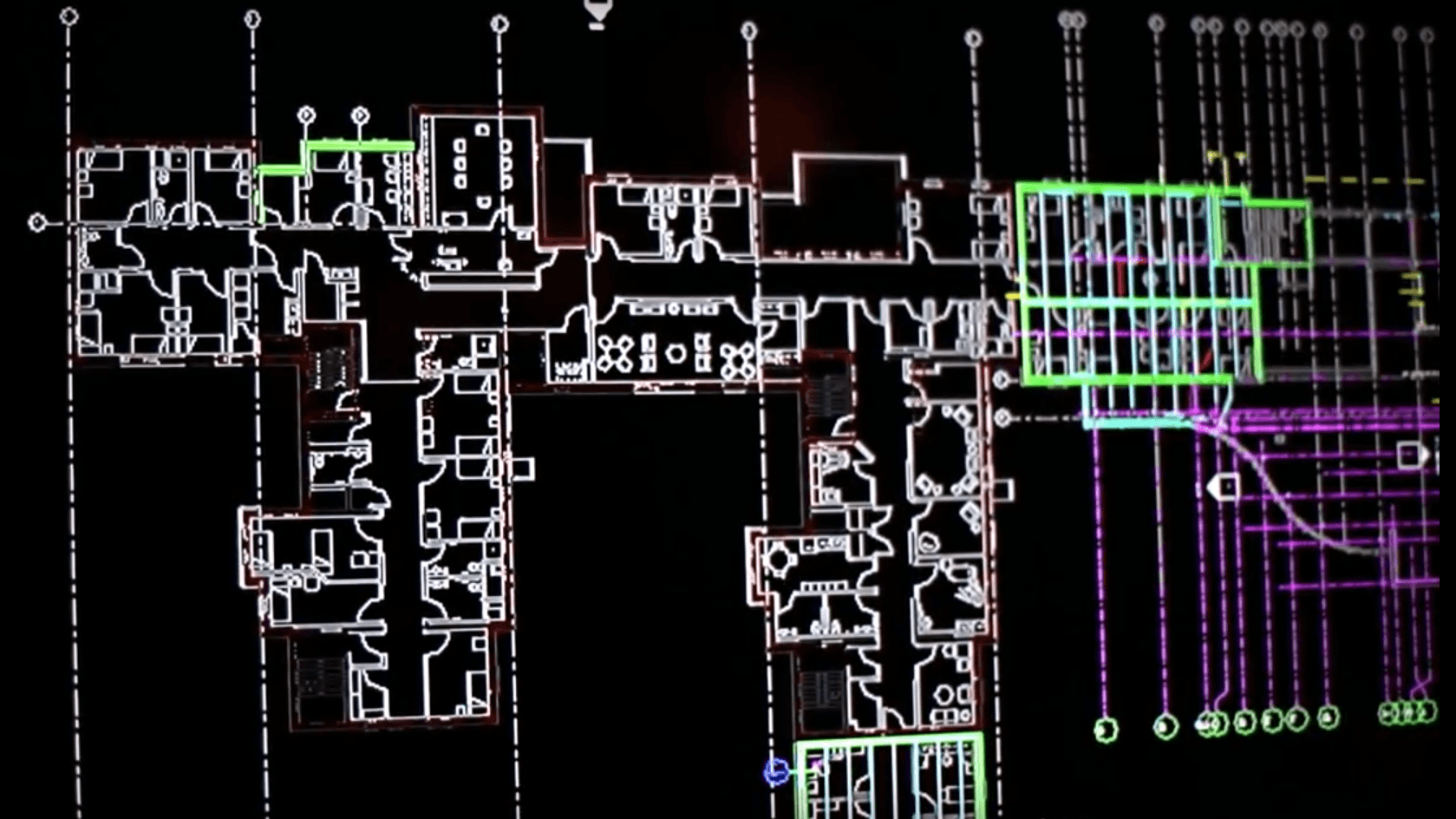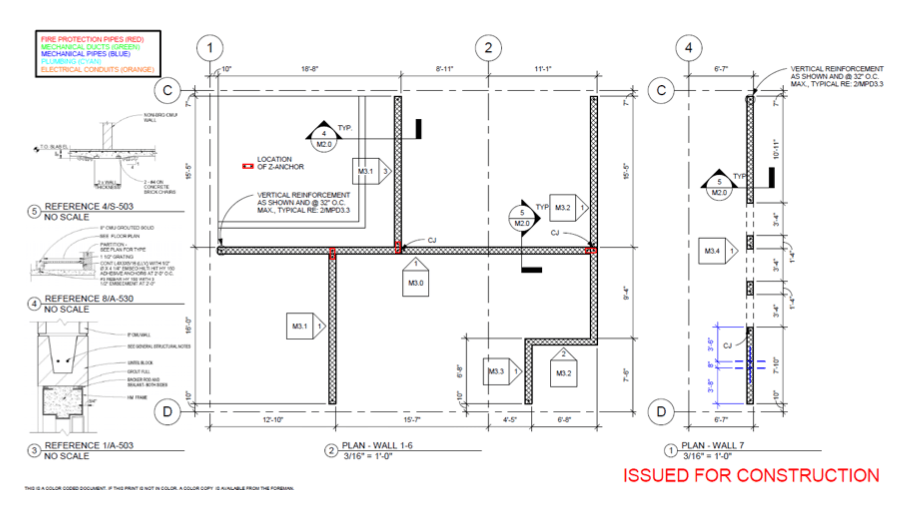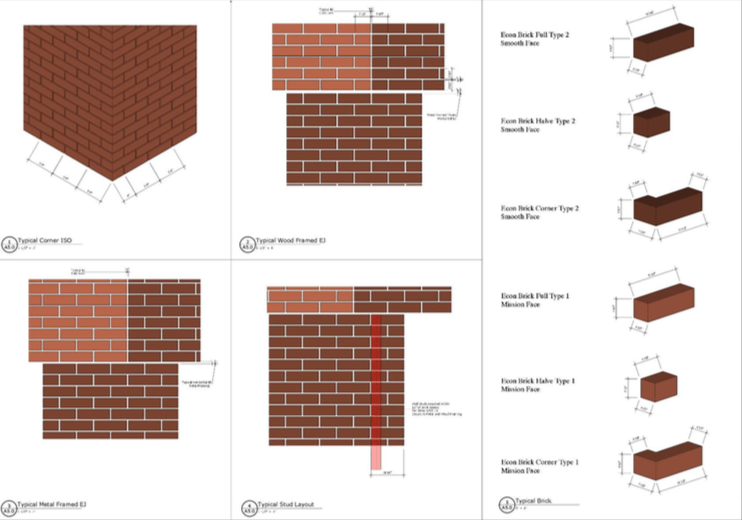Background and Overview
While many contractors may be apprehensive toward new modeling techniques involved in masonry projects, one large initiative aims to give the trade a seat at the table with designers and architects. Though other wall types have had their own versions of BIM, or “building information modeling,” for awhile, BIM for masonry endeavors to fill the gap. In order to advance the market share for our industry, an Initiative was started in 2012 to create modeling for masonry.
According to the website for the project, BIM-M’s mission is: “To unify the masonry industry and all supporting industries through encouraging the development and implementation of BIM for masonry software to facilitate smoother workflows and collaboration across all disciplines from owner, architect, engineer, manufacturer, mason, contractor, construction manager, and maintenance professionals.”
Though initially it may seem that BIM-M primarily serves the design community, it offers a variety of benefits to all members of the trade, especially mason contractors. “BIM-M is meant to be a resource to contractors. BIM-M is trying to encourage contractors to start modeling their projects. To create 3D models for their own use. Start participating in the BIM process. To help accomplish this BIM-M has published Volumes I & II of “The BIM Deliverables Guide for Masonry Contractors. “ Both guides are available on the BIM-M website bimformasonry.org free of charge,” explains Fred Kinateder, President of Kinateder Consulting.
Broken into two phases of work, the BIM-M initiative started by developing a set of requirements. Those five key aspects of the first phase, completed in 2012, are: architectural parametric modeling, structural modeling and analysis, masonry construction activities, construction management, and masonry materials. By 2015, the second phase of the project was completed. This phase had four sub-projects. They were: Masonry Unit Model Definition, BIM-M Benchmark, Masonry Wall Model Definition, BIM-M Contractor Input.
Commitment and Impact
BIM-M strives to modernize the workflow of the construction industry within the masonry world. It’s received sponsorship from the International Union of Bricklayers and Allied Craftworkers (IUBAC), the Mason Contractors Association of America (MCAA), the International Masonry Institute (IMI), the National Concrete Masonry Association (NCMA), the Western States Clay Products Association (WSCPA), the Brick Industry Association (BIA) and The Masonry Society (TMS) and is being guided by the Digital Building Laboratory at the Georgia Institute of Technology.
“The masonry industry has always been fragmented. BIM-M has united the major organizations and associations in the industry to work together. The good news is BIM-M is well on the way to making masonry viable in the BIM environment. Some of the tools that have been developed for designers like Revit plugins and the masonry unit database (MUD) will make it easier for designers to use masonry efficiently and economically in their design models. Hopefully this will lead to increased market share for masonry materials,” adds Kinateder.
From perspective of a mason contractor, BIM-M allows for easier and more interactive team management and scheduling, tools for jobsite safety, and the ability to better “talk” with architects, engineers, and project managers. Additionally, BIM-M allows clients to better understand life-cycle costs of ownership, record-keeping for maintenance and upkeep, along with the ability to create and maintain as-built drawings. Importantly, this will allow material suppliers to spec out standard building product models, allow for simpler access to supply requirements and e-commerce platforms, and will link to materials requirements planning and environmental product declarations.
Fred Kinateder explains, “BIM-M makes life easier by doing the research to help contractors make informed decisions about how they want to participate in the BIM process. The guides provide some of the software options available to contractors. Show how contractors are using specific softwares. It also gives the contractors options for third party vendors that offer modeling and BIM coordination services. All of this information is meant to make it easier for the contractor to get started working in the BIM environment.”
The Unit Database
As opposed to previous AutoCAD and Revit models, the goal of BIM-M is to do more than just provide a “skin” on a project drawing. With BIM-M, projects will be able to provide specifications and counts for individual units within a project. This is what will allow architects and engineers to feel more comfortable designing with masonry, and what will allow mason contractors to speak the same language as designers.
As such, the first major project for the Initiative was to create the unit masonry database for BIM software developers. Material shapes, weights, sizes, feels, thermal properties, and manufacturing locations can all be captured within the specs of the brick, CMUs, or cast-stones. Combined with the ability for designers to actually see hatch patterns and where cuts and partial units will occur. Previously, “skins” were applied to model elements which would not have provided any of this information.
Getting Started With BIM
The easiest way to get started with working in a BIM environment is to talk to other contractors who are already using it. Many companies who are smaller may not be able to kick off a full-fledged BIM-M usage, so it’s important to research the software and decide what is the most realistic approach to take. Finally, the MCAA offers a series of BIM-M webinars for people members to learn more about the topic.
The BIM-M Initiative also has put out a variety of resources for contractors. They include: “Developing a Business Case for BIM Integration in Your Company,” “The Future of 3-D modeling for Concrete Contractors,” “BIM-M and BIM forum websites,” BIM Deliverables Guide for Masonry Contractors.
Software falls into two types: 3D modeling and BIM-specific software. SketchUp and AutoCAD are the primary ones used for 3D modeling, while Revit by Autodesk (used by about 75% of the design community) and Tekla (primarily used for concrete and rebar) are the BIM-specific software.
The recommendation is that contractors create a BIM Execution Plan, outlined in the Deliverables Guide. In summary, the plan is designed to allow contractors to understand what they want from their models, how that information will be utilized in day-to-day operations, and who the information will be shared with.
Deliverables Used By Mason Contractors
Some examples of goals BIM can help contractors achieve are: to increase productivity, streamline schedules, improve work quality, and simplify the supply chain process. After the goals are set, deliverables can include: material quantities for purchase orders, shop drawings, virtual mockups, RFI’s for unclear details, layout with material quantities, rebar placement and size, heights and coursing, lift and working drawings, equipment and scaffold requirements and site logistics.
The benefit of using BIM-M to do this is that all of the information is derived from a model created during the early phases of a project. That means information can be cleared up with clients and designers prior to work (and rework) being done.
The promise of BIM is that it will allow masonry to effectively and easily compete with other wall types. Designers who would previously avoid masonry units for projects can now accurately and simply create projects using the wall type. Additionally, contractors can better communicate with their clients, engineers, and workforce on how to best complete a project.





